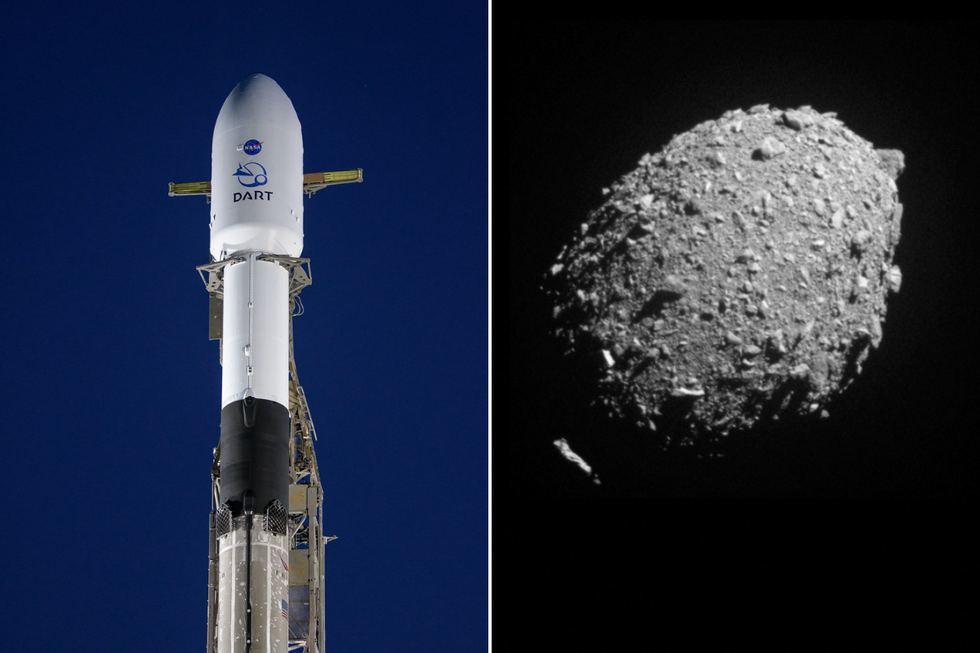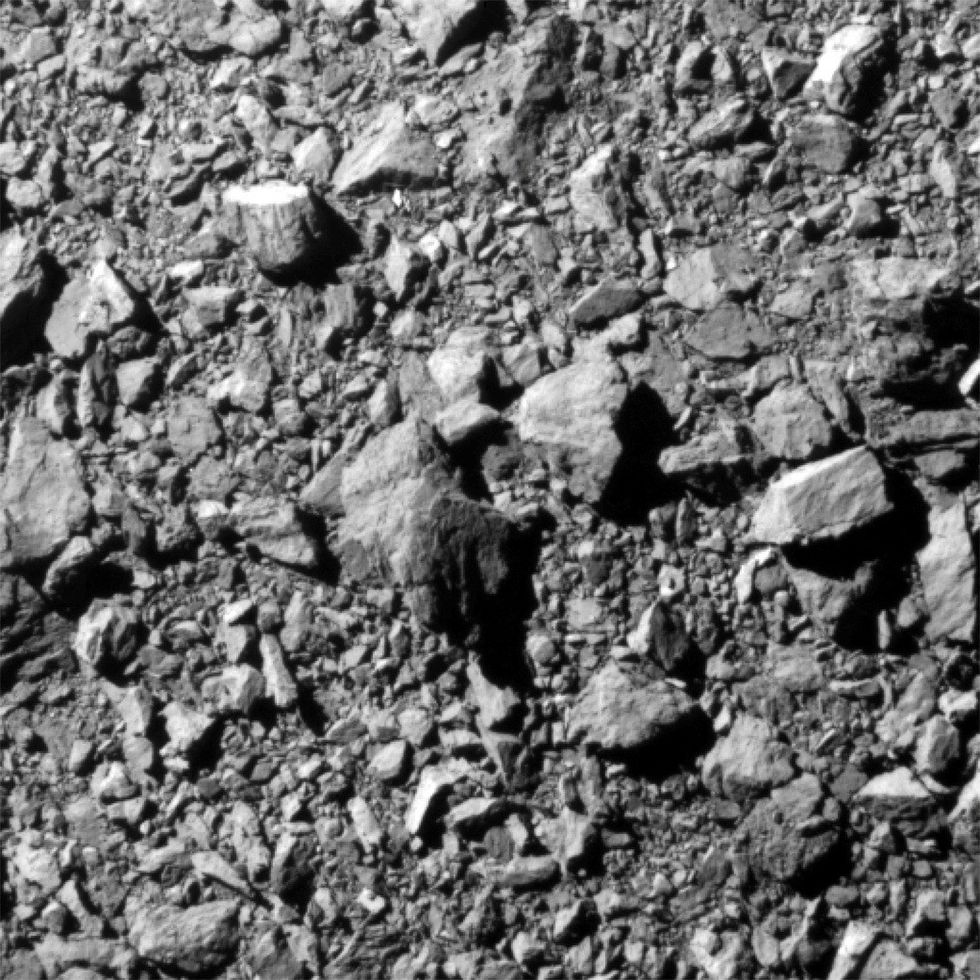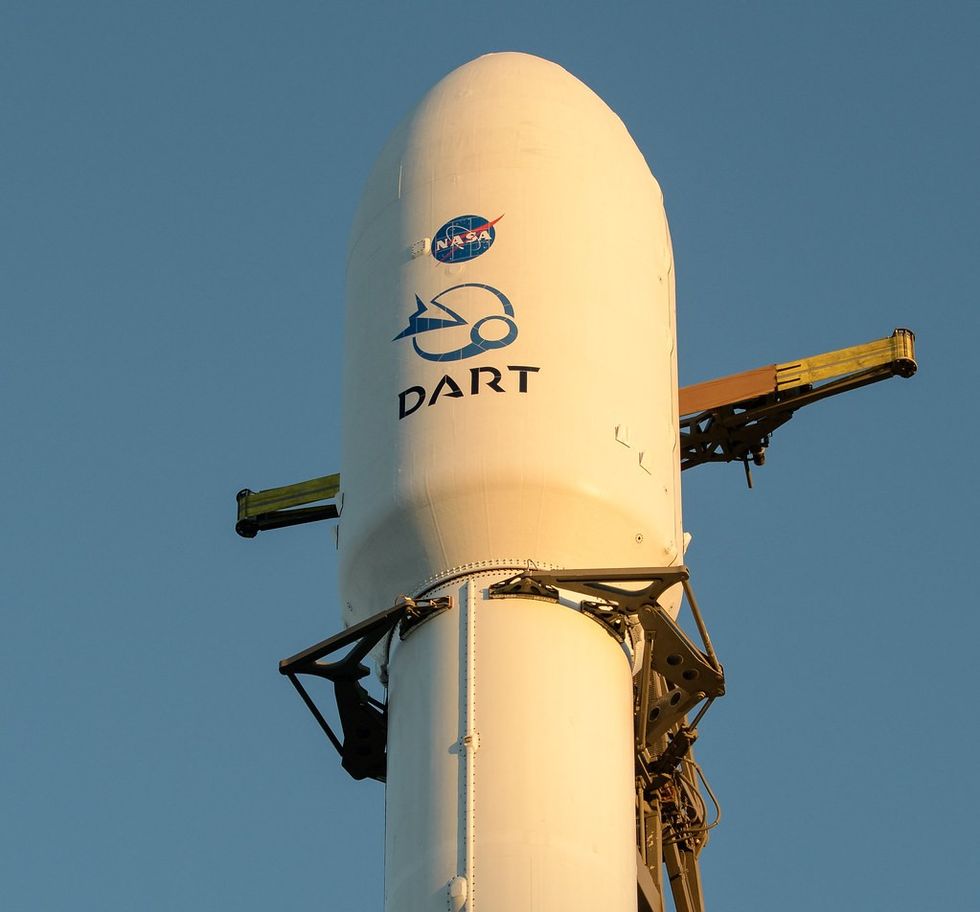Asteroid smashed into shape of a WATERMELON after Nasa deliberately crashed spaceship
Scientists observed a change in the orbit of the Dimorphos asteroid
Don't Miss
Most Read
Trending on GB News
A Nasa spaceship has smashed into an asteroid, changing its shape to one of a "watermelon."
The Double Asteroid Redirection Test (Dart) mission aimed to show a well-aimed object could knock an asteroid off course.
The Dart mission blasted a spaceship developed by Nasa's Jet Propulsion Laboratory (JPL) and partner universities into the asteroid Dimorphos at speeds of around 23,000km/h.
Nasa wanted to see whether a big enough impact could shift the trajectory of an asteroid as a test case for developing planetary defences.

The DART space ship crashed with the Dimorphos asteroid
Reuters/WikICommons
JPL navigation engineer Shantanu Naidu said: "When Dart made impact, things got very interesting."
Having previously been a potato-shaped 'oblate spheroid' it’s now described by Naidu as "a ‘triaxial ellipsoid' – something more like an oblong watermelon."
In the paper, co-authored by Naidu, it concluded: "The Dart mission and the subsequent analysis...unveiled the complex dynamics and associated changes to binary asteroid systems following a kinetic impact event.
"These insights not only advance our understanding of the response of small celestial bodies to such an event but also have implications for planetary defence strategies against potentially hazardous near-Earth asteroids."
LATEST SPACE NEWS

The last complete image of asteroid moonlet Dimorphos, taken by the DRACO imager on NASA's DART mission 12 kilometers from the asteroid and two seconds before impact
Reuters
Scientists also observed a slight change to the orbital path of Dimorphos, noticing it now has a wobbly, stretched orbital path around the much larger Didymos asteroid.
JPL senior research scientist Steve Chesley said: "Before impact, the times of the events occurred regularly, showing a circular orbit [of Dimorphos].
"After impact, there were very slight timing differences, showing something was askew. We never expected to get this kind of accuracy."
By observing the passage of reflected sunlight from the two objects, Nasa teams were able to quickly determine Dimorphos’ orbit was about 33 minutes shorter after the collision.

The Dart spacecraft deliberately crashed into the asteroid
Reuters
Meanwhile one man has detailed his role in Nasa's billion-dollar plan to stop an asteroid on collision with earth before it's too late.
The 101955 Bennu asteroid is 490 metres across - almost 50m larger than the Empire State Building meaning any impact with Earth could be cataclysmic.
Dante Lauretta, 54, a planetary science and cosmochemistry professor at the University of Arizona, was selected to head up a mission to research, chart and even sample 101955 Bennu.
He said: "If it hits Earth, its path will blaze through the atmosphere many times brighter than the midday sun. The impact will release a blast of energy equivalent to 1,450 megatons of TNT."









